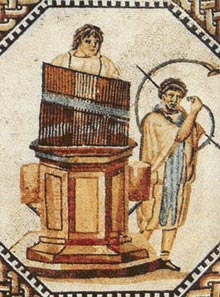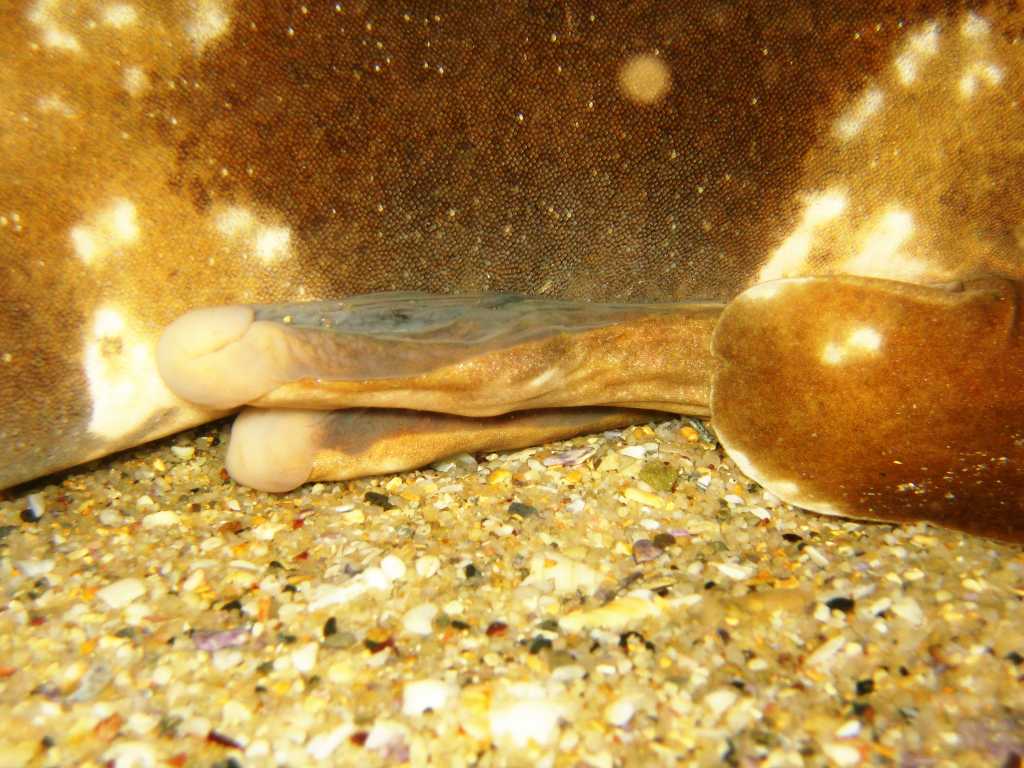|
Cornu (other)
Cornu (pl. cornua) is a Latin word for ''horn''. Cornu may also refer to: * Cornu (horn), an ancient musical instrument People *Dominique Cornu (born 1985), Belgian road and track cyclist * Marie Alfred Cornu, French physicist for whom the Cornu spiral is named *Paul Cornu (1881–1944), French engineer sometimes credited as the creator of the first helicopter Places * Cornu, Prahova, a commune in Prahova County, Romania * Cornu Luncii, a commune in Suceava County, Romania * Cornu, a village in Bucerdea Grânoasă Commune, Alba County, Romania * Cornu, a village in Orodel Commune, Dolj County, Romania * Cornu de Jos (other), multiple places * ''Cornu–'', a prefix used to indicate a relation to Cornwall Science and medicine * Cutaneous horn, an eruption of the skin, mostly in fair skinned persons which can be benign but is often a precursor of skin cancer Anatomy * Cornu ammonis, a part of the hippocampus of the brain * Cornu coccygeum, one of two upward projecting p ... [...More Info...] [...Related Items...] OR: [Wikipedia] [Google] [Baidu] |
Cornu (horn)
A ''cornu'' or ''cornum'' ( lat, cornū, cornūs or cornum, "horn", plural ''cornua'', sometimes translated misleadingly as "cornet") was an ancient Roman brass instrument about long in the shape of a letter 'G'. The instrument was braced by a crossbar that stiffened the structure and provided a means of supporting its weight on the player's shoulder. Some specimens survive in the archaeological record, two from the ruins of Pompeii. The ''cornu'' may be difficult to distinguish from the ''buccina''. It was used by the Roman army for communicating orders to troops in battle. In Roman art, the ''cornu'' appears among the instruments that accompany games ''(ludi)'' or gladiator combat in the arena, as on the Zliten mosaic. History and usage It was invented by the Etruscans for use in their funeral processions and military. Roman artistic representations of the ''cornu'' are typically realistic. While Etruscan art usually depict the ''cornu'' in use alongside the lituus. It w ... [...More Info...] [...Related Items...] OR: [Wikipedia] [Google] [Baidu] |
Cornu Anterius Medullae Spinalis
The anterior grey column (also called the anterior cornu, anterior horn of spinal cord, motor horn or ventral horn) is the front column of grey matter in the spinal cord. It is one of the three grey columns. The anterior grey column contains motor neurons that affect the skeletal muscles while the posterior grey column receives information regarding touch and sensation. The anterior grey column is the column where the cell bodies of alpha motor neurons are located. Structure The anterior grey column, directed forward, is broad and of a rounded or quadrangular shape. Its posterior part is termed the base, and its anterior part the head, but these are not differentiated from each other by any well-defined constriction. It is separated from the surface of the medulla spinalis by a layer of white substance which is traversed by the bundles of the anterior nerve roots. In the thoracic region, the postero-lateral part of the anterior column projects laterally as a triangular field, which ... [...More Info...] [...Related Items...] OR: [Wikipedia] [Google] [Baidu] |
Corni (other)
Corni may refer to: Places in Romania * Corni, Botoșani * Corni, Galați * Corni, a village in Cornățelu Commune, Dâmboviţa County * Corni, a village in Bicaz, Maramureș, Bicaz Commune, Maramureș County * Corni, a village in Bodești Commune, Neamţ County * Corni, a district in Liteni town, Suceava County * Cornii de Jos and Cornii de Sus, villages in Tătărăști Commune, Bacău County * Corni, a tributary of the river Bistra (Timiș), Bistra in Caraș-Severin County Other * , the archaic Italian plural term for the French horn * Guido Corni (1883–1946), colonial governor of Italian Somaliland See also * Cornel (other) * Cornelia (other) * Cornu (other) * Cornea (other) * Cornetu (other) * Cornățel (other) * Cornești (other) * Corneanu (other) {{disambiguation, geo, surname ... [...More Info...] [...Related Items...] OR: [Wikipedia] [Google] [Baidu] |
Cornetu (other)
Cornetu may refer to the following places in Romania: *Cornetu, a commune in Ilfov County * Cornetu, a village in Șimnicu de Sus Commune, Dolj County * Cornetu, a village in Căpreni Commune, Gorj County * Cornetu, a village in Vaideeni Commune, Vâlcea County * Cornetu, a village in Slobozia Bradului Commune, Vrancea County * Cornetu River See also * Cornel (other) * Cornelia (other) * Cornu (other) * Corni (other) * Cornea (other) * Cornățel (other) * Cornești (other) * Corneanu (other) {{geodis ... [...More Info...] [...Related Items...] OR: [Wikipedia] [Google] [Baidu] |
Corneanu (other)
Corneanu is a Romanian surname that may refer to: * Nicolae Corneanu (1923 - 2014), a Romanian metropolitan bishop of the Romanian Orthodox Church * Leonid Corneanu (1909 - 1957), a Moldovan poet, playwright and folklorist * Corneanu, a village in Odăile Commune, Buzău County, Romania See also * Cornel (other) * Cornelia (other) * Cornu (other) * Corni (other) * Cornea (other) * Cornetu (other) * Cornățel (other) Cornățel or Cornatel may refer to: * Cornățel, a village in Buzoești Commune, Argeș County, Romania * Cornățel, a village in Urechești Commune, Bacău County, Romania * Cornățel, a village in Roșia Commune, Sibiu County, Romania * ''C ... * Cornești (other) {{disambiguation, surname Romanian-language surnames ... [...More Info...] [...Related Items...] OR: [Wikipedia] [Google] [Baidu] |
Le Cornu
Le Cornu is a surname originally of France, French origin, and in particular from Calvados and the area around Bayeux. It has a number of variants, including 'Cornu', 'Lecornue', 'Lecornu' and 'Cornut'. Tosti comments that it was 'a name that some bearers found difficult to wear as it immediately and incontrovertibly evoked a horned person, or a cuckold'. However, this has been challenged by M.T. Morlet who comments that this identification of horns with a husband who has been cheated on only came into being at the end of the Middle Ages. The discussion continues, although Tosti accepts Dauzat's view that the idea of a cuckold is found from the 13th century onwards and that 'it is this interpretation which will undoubtedly stand the test of time'. The variant 'Lecorne' is found in the Nord-Pas-de-Calais (Hauts de France) area of France where a feminine form 'Lacorne' is also found. In this case, while also carrying the meaning of 'horned person' it is understood to refer to a horn or ... [...More Info...] [...Related Items...] OR: [Wikipedia] [Google] [Baidu] |
Clasper
In biology, a clasper is a male anatomical structure found in some groups of animals, used in mating. Male cartilaginous fish have claspers formed from the posterior portion of their pelvic fin which serve to channel semen into the female's cloaca during mating. The act of mating in some fish including sharks usually includes one of the claspers raised to allow water into the siphon through a specific orifice. The clasper is then inserted into the cloaca, where it opens like an umbrella to anchor its position. The siphon then begins to contract, expelling water and sperm. The claspers of many shark species have spines or hooks, which may hold them in place during copulation. Male chimaeras have cephalic claspers (tenacula) on their heads, which are thought to aid in holding the female during mating. In entomology, it is a structure in male insects that is used to hold the female during copulation (see Lepidoptera genitalia for more). See also *Sexual coercion among animals ... [...More Info...] [...Related Items...] OR: [Wikipedia] [Google] [Baidu] |
Cornu Aspersum
''Cornu aspersum'' (syn. ''Cryptomphalus aspersus''), known by the common name garden snail, is a species of land snail in the family Helicidae, which includes some of the most familiar land snails. Of all terrestrial molluscs, this species may well be the most widely known. It was classified under the name ''Helix aspersa'' for over two centuries, but the prevailing classification now places it in the genus ''Cornu''. The snail is relished as a food item in some areas, but it is also widely regarded as a pest in gardens and in agriculture, especially in regions where it has been introduced accidentally, and where snails are not usually considered to be a menu item. Description The adult bears a hard, thin calcareous shell in diameter and high, with four or five whorls. The shell is variable in coloring and shade of color, but generally it has a reticulated pattern of dark brown, brownish-golden, or chestnut with yellow stripes, flecks, or streaks (characteristically interr ... [...More Info...] [...Related Items...] OR: [Wikipedia] [Google] [Baidu] |
Uterine Horns
The uterine horns (cornua of uterus) are the points in the upper uterus where the fallopian tubes exit to meet the ovaries. They are one of the points of attachment for the round ligament of uterus (the other being the mons pubis). They also provide attachment to the ovarian ligament, which is located below the fallopian tube at the back; while the round ligament of uterus is located below the tube at the front. The uterine horns are far more prominent in other animals (such as cows and cats) than they are in humans. In the cat, implantation of the embryo occurs in one of the two uterine horns, not the body of the uterus itself. Occasionally, if a fallopian tube does not connect, the uterine horn will fill with blood each month, and a minor one-day surgery will be performed to remove it. Often, people who are born with this have trouble getting pregnant as both ovaries are functional and either may ovulate. The spare egg An egg is an organic vessel grown by an animal to ... [...More Info...] [...Related Items...] OR: [Wikipedia] [Google] [Baidu] |
Sacral Hiatus
The sacrum (plural: ''sacra'' or ''sacrums''), in human anatomy, is a large, triangular bone at the base of the spine that forms by the fusing of the sacral vertebrae (S1S5) between ages 18 and 30. The sacrum situates at the upper, back part of the pelvic cavity, between the two wings of the pelvis. It forms joints with four other bones. The two projections at the sides of the sacrum are called the alae (wings), and articulate with the ilium at the L-shaped sacroiliac joints. The upper part of the sacrum connects with the last lumbar vertebra (L5), and its lower part with the coccyx (tailbone) via the sacral and coccygeal cornua. The sacrum has three different surfaces which are shaped to accommodate surrounding pelvic structures. Overall it is concave (curved upon itself). The base of the sacrum, the broadest and uppermost part, is tilted forward as the sacral promontory internally. The central part is curved outward toward the posterior, allowing greater room for the pelv ... [...More Info...] [...Related Items...] OR: [Wikipedia] [Google] [Baidu] |
Sacral Cornua
Sacral may refer to: *Sacred, associated with divinity and considered worthy of spiritual respect or devotion *Of the sacrum The sacrum (plural: ''sacra'' or ''sacrums''), in human anatomy, is a large, triangular bone at the base of the spine that forms by the fusing of the sacral vertebrae (S1S5) between ages 18 and 30. The sacrum situates at the upper, back part ..., a large, triangular bone at the base of the spine See also * {{disambiguation ... [...More Info...] [...Related Items...] OR: [Wikipedia] [Google] [Baidu] |



